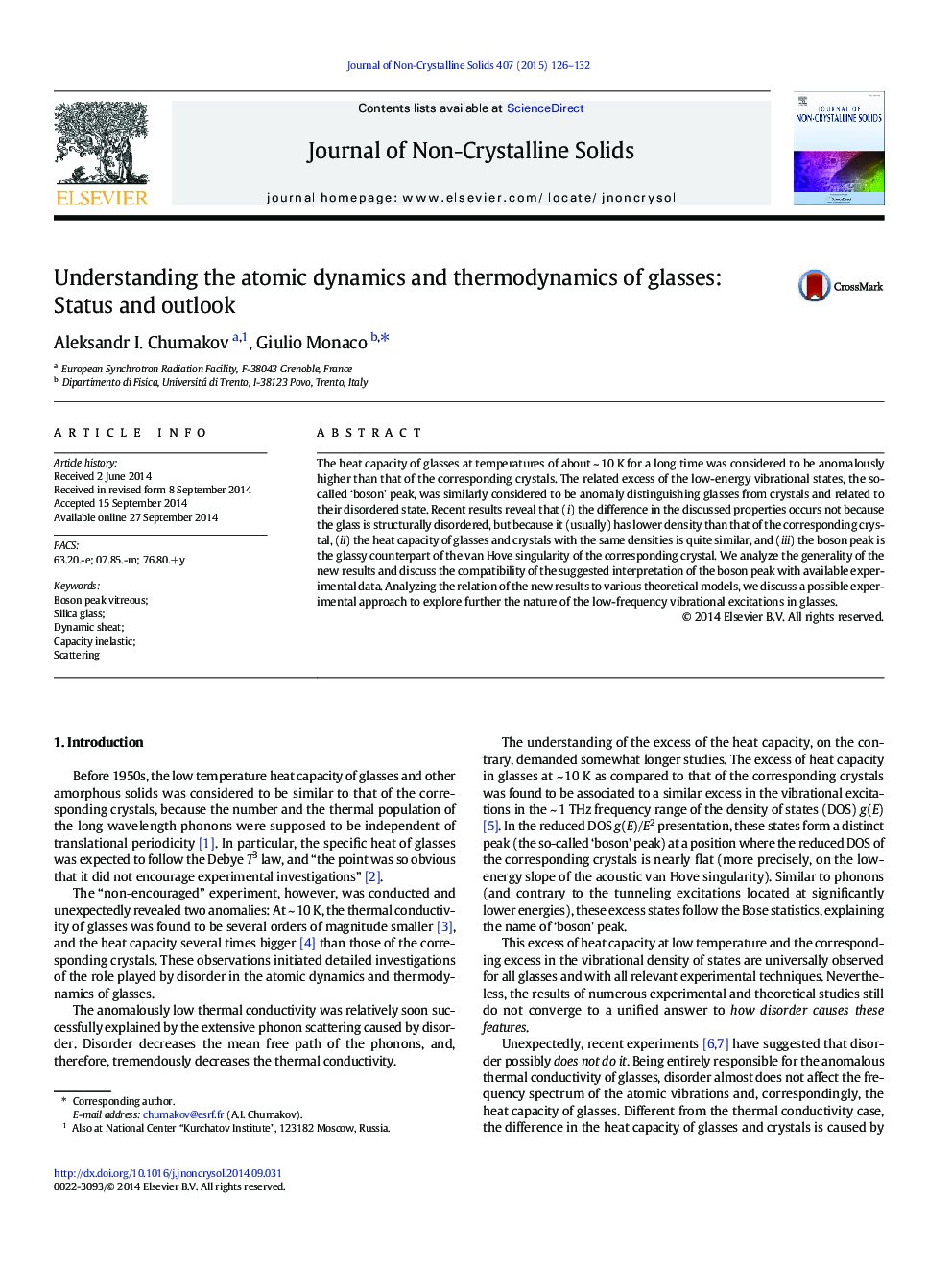| Article ID | Journal | Published Year | Pages | File Type |
|---|---|---|---|---|
| 7901418 | Journal of Non-Crystalline Solids | 2015 | 7 Pages |
Abstract
The heat capacity of glasses at temperatures of about ~Â 10Â K for a long time was considered to be anomalously higher than that of the corresponding crystals. The related excess of the low-energy vibrational states, the so-called 'boson' peak, was similarly considered to be anomaly distinguishing glasses from crystals and related to their disordered state. Recent results reveal that (i) the difference in the discussed properties occurs not because the glass is structurally disordered, but because it (usually) has lower density than that of the corresponding crystal, (ii) the heat capacity of glasses and crystals with the same densities is quite similar, and (iii) the boson peak is the glassy counterpart of the van Hove singularity of the corresponding crystal. We analyze the generality of the new results and discuss the compatibility of the suggested interpretation of the boson peak with available experimental data. Analyzing the relation of the new results to various theoretical models, we discuss a possible experimental approach to explore further the nature of the low-frequency vibrational excitations in glasses.
Related Topics
Physical Sciences and Engineering
Materials Science
Ceramics and Composites
Authors
Aleksandr I. Chumakov, Giulio Monaco,
